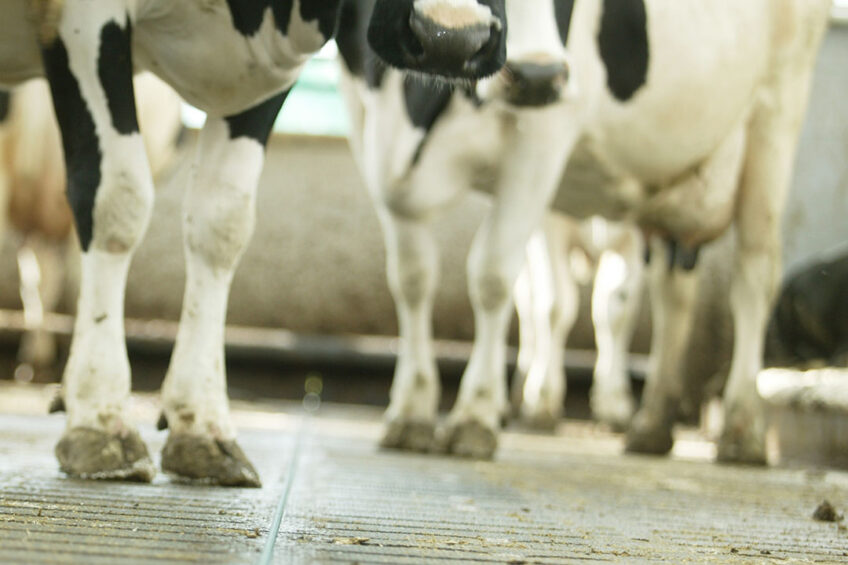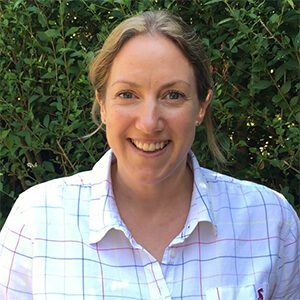The digital cushion and its role in lameness

The last few years has seen us add significantly to our knowledge surrounding the digital cushion in the cow’s claw (also known as the fat pad) and its role in lameness prevention in dairy cattle.
The ‘do thin cows go lame or lame cows go thin’ quandary was addressed a few years ago with research by the University of Nottingham group in the UK demonstrating that maintaining body condition score (BCS) has an important role to play in preventing lameness. Cows with a BCS<2 were significantly more at risk of lameness with a bcs of ≥2.5 being suggested as optimal from a lameness prevention perspective.>

Misconception: Digital cushion acts as a shock absorber
Based on the previous work of both sides of the Atlantic, we know that BCS and digital cushion thickness are related so it can be hypothesised that maintaining BCS, maintains the digital cushion. It is a misconception that the digital cushion acts as a ‘shock absorber’ since the type of fats contained in the digital cushion dissipate rather than absorb forces, therefore a compromised digital cushion will have a reduced ability to dissipate the concussive forces that occur during walking away from the vulnerable sole area of the foot and to the stronger, weight bearing walls.
What factors impact on digital cushion ‘health’?
So, we know that BCS is important in maintaining a healthy digital cushion, but what other factors impact on its ‘health’? Whilst we’ve established that lameness leads to irreversible changes on the pedal bone, the full circle hadn’t been completed in terms of how this then impacts on the digital cushion. It was postulated that the inflammation associated with claw horn lesions (i.e., sole bruising, sole ulcer and white line disease) could lead to utilisation of the fatty acids in the digital cushion as inflammatory mediators or the development of scar tissue, thus reducing its ability to dissipate strike forces.
Figure 1 – Taken from Wilson et al., 2021. A histogram of the combined digital cushion volume from the hindfeet of 57 cull dairy cows. The bottom reconstruction images (viewed from the sole) show the digital cushion (yellow areas) in relation to the other tissues of the foot (grey areas). The images show cows with low (A), moderate (B) and high (C) digital cushion volumes. Medial = inside claw. Lateral = outside claw.

A recently published paper in the Journal of Dairy Science (Wilson et al., 2021) sought to understand the relationship between the digital cushion volume and the lameness history of the animal. A total of 196 hind feet from 98 cull cows culled were included in the study and assessed for digital cushion volume. A subset of cows with an extensive lameness history was also analysed further.
Here are some of the key findings:
- The total volume of the digital cushion in the hind outer claws was significantly less than in the inner claws.
- There was a strong relationship between the volume of fat within the digital cushion and its total volume.
- There was a large range in the digital volume cushion in the outer claws between cows and in some instances, there was no digital cushion at all (range 0-30mL; Figure 1)!
- Cows with a history of lameness or that had an increased lameness score in the 4 weeks before culling were more likely to have a reduced claw digital cushion volume in the outer claw.
- Digital cushion volume was negatively associated with the number of lameness events or claw horn lesions recorded in the animal’s history i.e. the more lameness events the cow had had, the lower the volume of her digital cushion.
- Cows with a BCS>3 or an increasing BCS in the last 4 weeks before culling had an increased outer claw digital cushion volume.
So, what does this mean?
This is the first time that digital cushion volumes have been studied rather than just assessing digital cushion thickness and it has identified that there is a large variation between cows. As well as variations between individual cows there can also be large variations between each of the 3 cylinders that make up the digital cushion in the outer hind claw, in some cases one or more of the cylinders may be absent. It also demonstrates a clear reduction in digital cushion volume with an increasing number of lameness events or claw horn lesions.
The chronic cycle of lameness begins
The authors propose that the variations seen were due to a combination of genetic, developmental and disease derived factors occurring throughout the animal’s life. Variations in digital cushion volume arise initially from animals having different genetic potentials for the development of the digital cushion. This is then influenced (positively or negatively) through management during the rearing period, setting the scene for how ‘robust’ the animal’s foot is to the future development of claw horn lesions. Once an animal as experienced a claw horn lesion, this impacts on the digital cushion and increases her susceptibility to further lameness events and the chronic cycle of lameness begins.
The results of this study add significant weight to ensuring that cows get off to the best start by creating a robust foot with a focus on breeding, management and lameness prevention.
Join 13,000+ subscribers
Subscribe to our newsletter to stay updated about all the need-to-know content in the dairy sector, two times a week.










